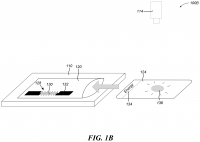TPCi Files Exciting New Tech Patent for Tracking Cards During Gameplay!
We’ve just discovered that TPCi has filed a patent for an RFID tag system that will allow cards to be tracked during gameplay. The technology is intended for livestreams.
A Pokemon card is inserted into a card sleeve embedded with an RFID tag. As each card is inserted, a camera photographs the card and looks up its identity. Thus, each card sleeve is mapped to a virtual Pokemon card.
As a player draw cards, an RFID reader determines which cards left their deck. This way, the identity, location, and movement of cards can be tracked during gameplay. This allows commentators and viewers to instantly see which cards are in a player’s hand, discard pile, and other potential scenarios during gameplay. This will open new opportunities for commentary and presentation. It will also reduce the need for cameras to capture player’s (often obscured) hands.
The patent was filed in April 2019 and granted in May 2022. The invention is credited to Paul Earl Grimes, who works at TPCi in software and technology. As far as we can tell, this is the only tech patent TPCi has ever filed. It’s unknown if and when the technology will go into use.
The inspiration for the patent is detailed in the filing:
Televising poker tournaments, trading card game tournaments, or other card games have grown in popularity over the past few years. During these televised events, players draw, or are dealt, one or more playing cards face down. Commentators for the event can then provide information or discuss different strategies and options available to the players based on the cards in their particular hand, as well as the cards in opposing players’ hands. But to provide accurate or real-time information, the commentators need to know what cards are in each player’s hand.
Typically, when a player picks up or views his or her cards, they direct the playing face of the cards towards a camera. The commentators can then view captured images of the cards to provide relevant information to the televised audience. The use of cameras also allows the televised audience to view the playing cards as they are viewed by the players. Such cameras can be placed under the playing surface or in an arm rest near each player so as to capture images of the cards when the player lifts the cards to see which cards he or she was dealt. However, cameras have many disadvantages. For example, a player can use his or her hand to completely block the camera from capturing images of the cards. As another example, the camera may capture an image of only a portion of the cards, which, in more complex card games, may not include enough information to allow the commentators to know which cards the player is holding. It is with respect to these and other considerations that the embodiments described herein have been made.



